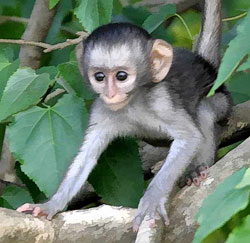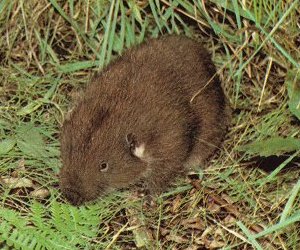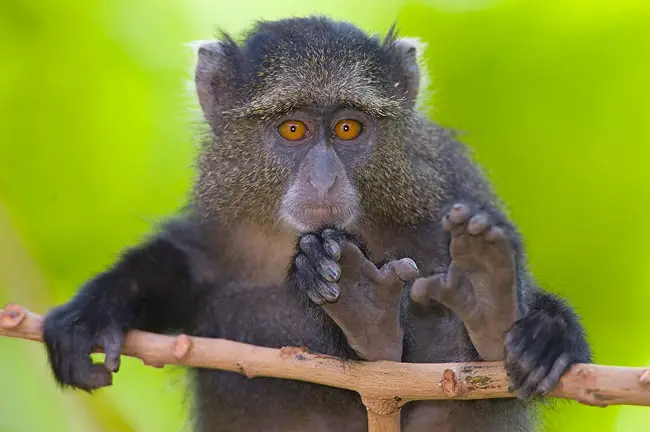Mandrill
The Mandrill is a primate and is considered an old world monkey being very closely related to baboons.
The Mandrill holds the distinction of being one of the largest species of monkeys in the world.
They can weigh in at close to 60 pounds for males and forty pounds for the females who are a great deal smaller.
Mandrills also have a very unique olive color to their fur and a very distinct coloration to their backside and face, which grows more pronounced as they get older and reach maturity.
The female’s colors are duller in color but as they come into breeding season the color is more pronounced.

The Mandrill
Males will grow to be about 3 feet tall and will live as long as 25 years, females too will live to be about 20 years old. They do not breed until between 3 and 4 years of age.
Mandrills live in the rainforest of Gabon and the Congo areas as well as near the equator in Guinea.
They are very social and live as many other monkeys’ do, in large groups of animals including male’s, females and juveniles and infants. The group is led by a single dominant male who usually remains solitary.
One of the largest groups of Mandrills every verified by filming numbered well over 1300 monkeys in a national park in Gabon. It was the biggest monkey group ever recorded.
Mandrills are omnivores, which mean they will eat both vegetation and animal flesh. They forage daily for food, taking insects and small animals as well as vegetation.
The leopard has a particular liking for Mandrill and is one of the main predators that will take the monkeys.
Mandrills are not always well liked as a bigger group of them can cause a great deal of damage to crops in the area in a relatively short time span.
Mandrill’s females are pregnant for about 6 months are usually born between February and April.
The Mandrill courts each other. The female leads while the male follows and he will make small growling noises as he does.
Mandrill babies are born with open eyes and already furred. They have very pink skin for a few months, but can hang on to the mother when born and support their own weight.
Females, mothers form bonds with their children that may last a lifetime in the females, although with young males it lasts only until they reach maturity.
Find out more about the Mandills over at Wikipedia »



this is interesting i like all of the information
mandrills sound cooll! I think i am doing them for my science lab report
i love mandrills they’re so pretty:)
yah im learning bouit mandrills and all this info rocks my socks lolz yah i love mandrills lol
YOU HAVE GOOD PICS OF THE MANDRILL BABOONS.
he looks like he thinks he is a lion
Im doing a report on madrills and I was wondering when do mandrills leave their moms?
What is their main habitat?
what is their diet?
how many muscles are in the mandrill faces?
it u could answer any of these that would be great!!!
this is so awesome! i love mandrills
mm sounds nice kailey
i think mandrills are cool
Yeah this information really helped me in my school assignment and i now really like this animal! :)
Mandrill’s are very colourfull bum and nose
mandrills are so interesting! I thougt they would be ugly!